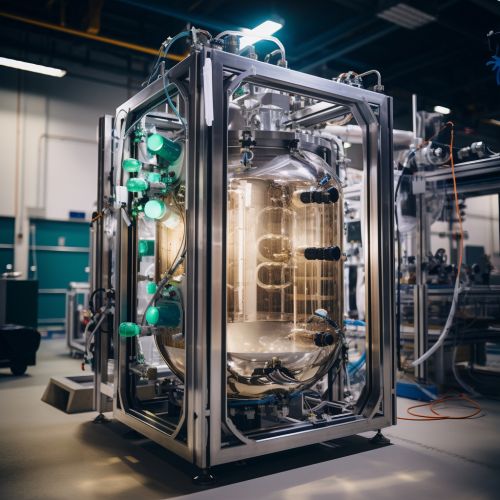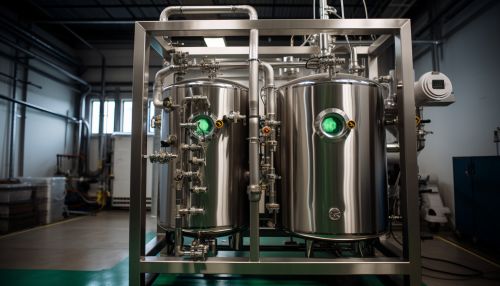Biohydrogen
Introduction
Biohydrogen refers to hydrogen produced biologically, most commonly by algae, bacteria and archaea. Biohydrogen is a potential biofuel obtainable from both cultivation and from waste organic materials. The interest in biohydrogen production stems from its high conversion efficiency and the fact that it's a clean energy source.
Biohydrogen Production
Biohydrogen is produced in a bioreactor based on the production of hydrogen by certain types of anaerobic bacteria. These bacteria use organic substrates to produce hydrogen and carbon dioxide. The process of biohydrogen production involves several biochemical reactions that are carried out by a series of enzymes. The main reactions involved in the production of biohydrogen are dark fermentation, photo-fermentation, and biophotolysis.


Dark Fermentation
Dark fermentation is the fermentative conversion of organic substrate to biohydrogen. It is a complex process that is affected by various factors such as pH, temperature, substrate concentration, and hydrogen partial pressure. Dark fermentation is carried out by a group of bacteria known as hydrogen-producing bacteria.
Photo-Fermentation
Photo-fermentation is another method for biohydrogen production. This process is carried out by photosynthetic bacteria using light energy. The bacteria use light energy to convert organic substrates into hydrogen and carbon dioxide. The efficiency of photo-fermentation is higher than that of dark fermentation, but it requires light energy, which can increase the cost of biohydrogen production.
Biophotolysis
Biophotolysis is a process carried out by green algae and cyanobacteria. These organisms use light energy to split water molecules into hydrogen and oxygen. This process has the potential to produce a large amount of hydrogen, but it is currently not commercially viable due to its high cost.
Biohydrogen Production Technologies
There are several technologies available for biohydrogen production. These technologies can be classified into two main categories: biological and thermochemical.
Biological Technologies
Biological technologies for biohydrogen production involve the use of microorganisms to produce hydrogen. These technologies include dark fermentation, photo-fermentation, and biophotolysis. These methods have the advantage of being environmentally friendly, but they are currently not commercially viable due to their high cost and low efficiency.
Thermochemical Technologies
Thermochemical technologies for biohydrogen production involve the use of heat to produce hydrogen from biomass. These technologies include gasification and pyrolysis. These methods have the advantage of being able to produce large amounts of hydrogen, but they require high temperatures and are therefore energy-intensive.
Advantages and Disadvantages of Biohydrogen
Biohydrogen has several advantages and disadvantages that need to be considered when evaluating its potential as a biofuel.
Advantages
Biohydrogen is a clean and renewable energy source. It does not produce any harmful emissions when burned, making it an environmentally friendly alternative to fossil fuels. Biohydrogen can be produced from a wide variety of organic materials, including waste products, which makes it a sustainable energy source.
Disadvantages
The main disadvantage of biohydrogen is its high production cost. The technologies used for biohydrogen production are currently not commercially viable due to their high cost and low efficiency. Additionally, the storage and transportation of hydrogen can be challenging due to its low energy density.
Future Prospects
Despite the current challenges, the future prospects for biohydrogen are promising. Advances in biotechnology and genetic engineering could potentially increase the efficiency of biohydrogen production. Additionally, the development of more efficient and cost-effective technologies for hydrogen storage and transportation could make biohydrogen a more viable alternative to fossil fuels.
